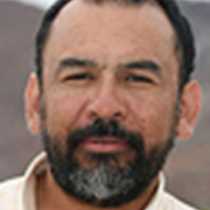Hull Canal & Boca de la Soledad, Magdalena Bay
Quiet waters and a magnificent sunrise woke us up this morning while anchored in front of San Carlos port, close to the southernmost entrance to Magdalena Bay. After breakfast, we picked our local pilot up and navigated northwards in the Hull Canal. All along the canal extensive patches of mangroves and sandbars (uncovered by the low tide) allowed us to observe a great variety of wadding and sea birds as well as waterfowl. Frigate birds, western gulls, great egrets, tricolored herons, royal terns, brants and double crested cormorants, among other birds, were seen perched on mangroves, on the sand, flying, sitting on the sea, or fishing in great numbers. Beyond the mangroves, on the slender and long sandbar known as Magdalena Island, large golden-colored sand dunes were observed. They actually protected our navigation from wind and the braveness of the Pacific Ocean. Sometimes, solitary birds in flight were caught by our cameras with an impressive and almost bizarre background of dunes.
In the afternoon, we spent our time hiking in the northernmost part of the island, and whale watching on our Zodiacs. Blows were seen in the distance, but a nice and cooperative pair of cow and calf gray whales was found. The baby whale delighted us with his active behavior, showing his head out of the water many times. He also played on the mother’s back. Rolling, breaching and fluking were also part of his acrobatic repertoire. With these animals we realized how important the dynamics of the lagoon are for baby gray whales. Very soon they have to be ready for the first great challenge of their lives: migrating north to the cold, but highly productive arctic waters to continue their development; one day, as adults, they will return to Baja to perpetuate their own species.
Quiet waters and a magnificent sunrise woke us up this morning while anchored in front of San Carlos port, close to the southernmost entrance to Magdalena Bay. After breakfast, we picked our local pilot up and navigated northwards in the Hull Canal. All along the canal extensive patches of mangroves and sandbars (uncovered by the low tide) allowed us to observe a great variety of wadding and sea birds as well as waterfowl. Frigate birds, western gulls, great egrets, tricolored herons, royal terns, brants and double crested cormorants, among other birds, were seen perched on mangroves, on the sand, flying, sitting on the sea, or fishing in great numbers. Beyond the mangroves, on the slender and long sandbar known as Magdalena Island, large golden-colored sand dunes were observed. They actually protected our navigation from wind and the braveness of the Pacific Ocean. Sometimes, solitary birds in flight were caught by our cameras with an impressive and almost bizarre background of dunes.
In the afternoon, we spent our time hiking in the northernmost part of the island, and whale watching on our Zodiacs. Blows were seen in the distance, but a nice and cooperative pair of cow and calf gray whales was found. The baby whale delighted us with his active behavior, showing his head out of the water many times. He also played on the mother’s back. Rolling, breaching and fluking were also part of his acrobatic repertoire. With these animals we realized how important the dynamics of the lagoon are for baby gray whales. Very soon they have to be ready for the first great challenge of their lives: migrating north to the cold, but highly productive arctic waters to continue their development; one day, as adults, they will return to Baja to perpetuate their own species.




